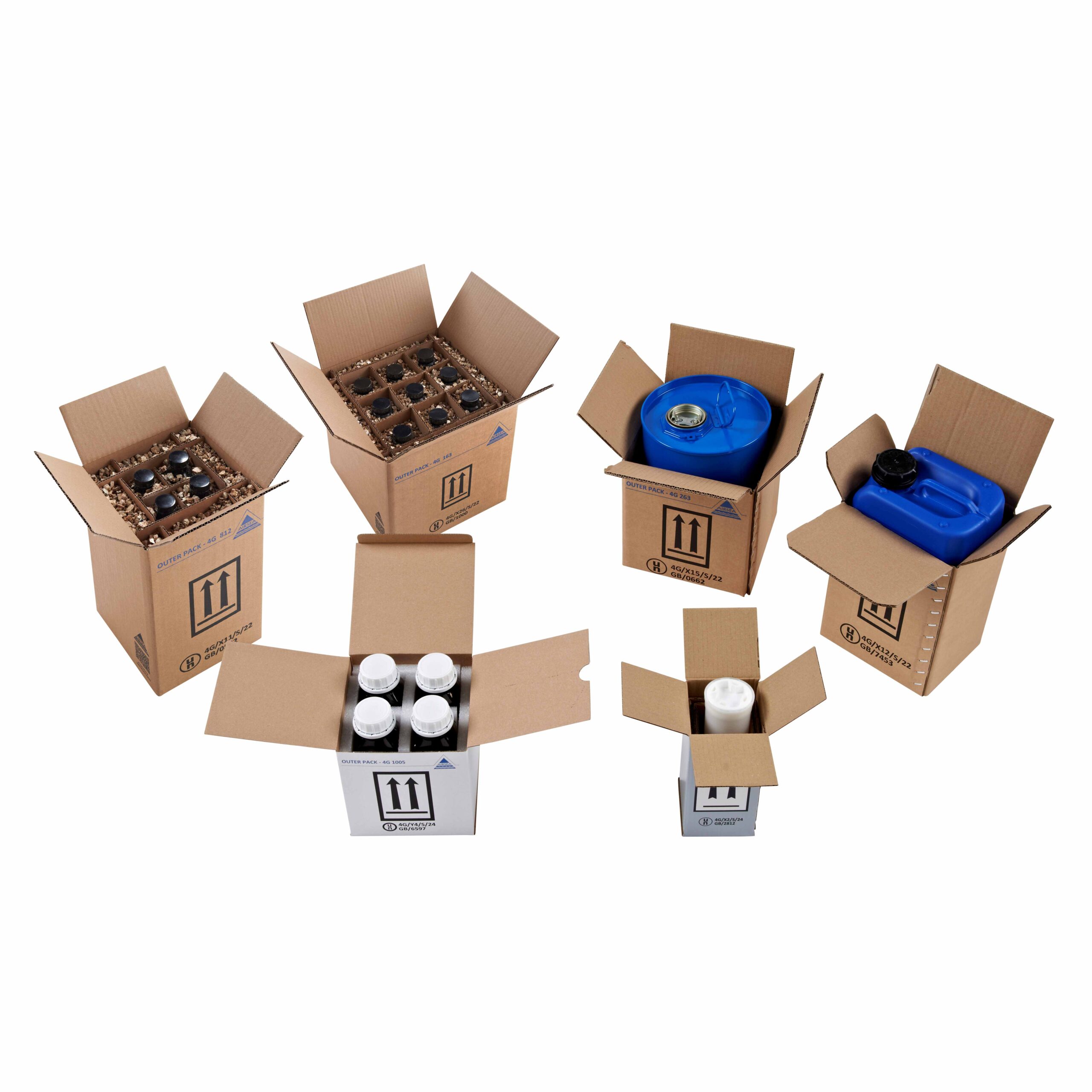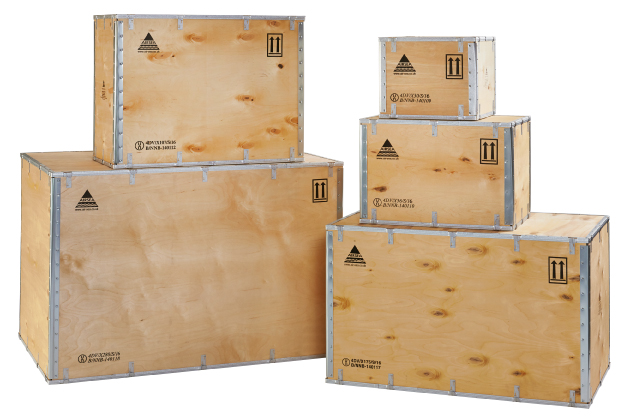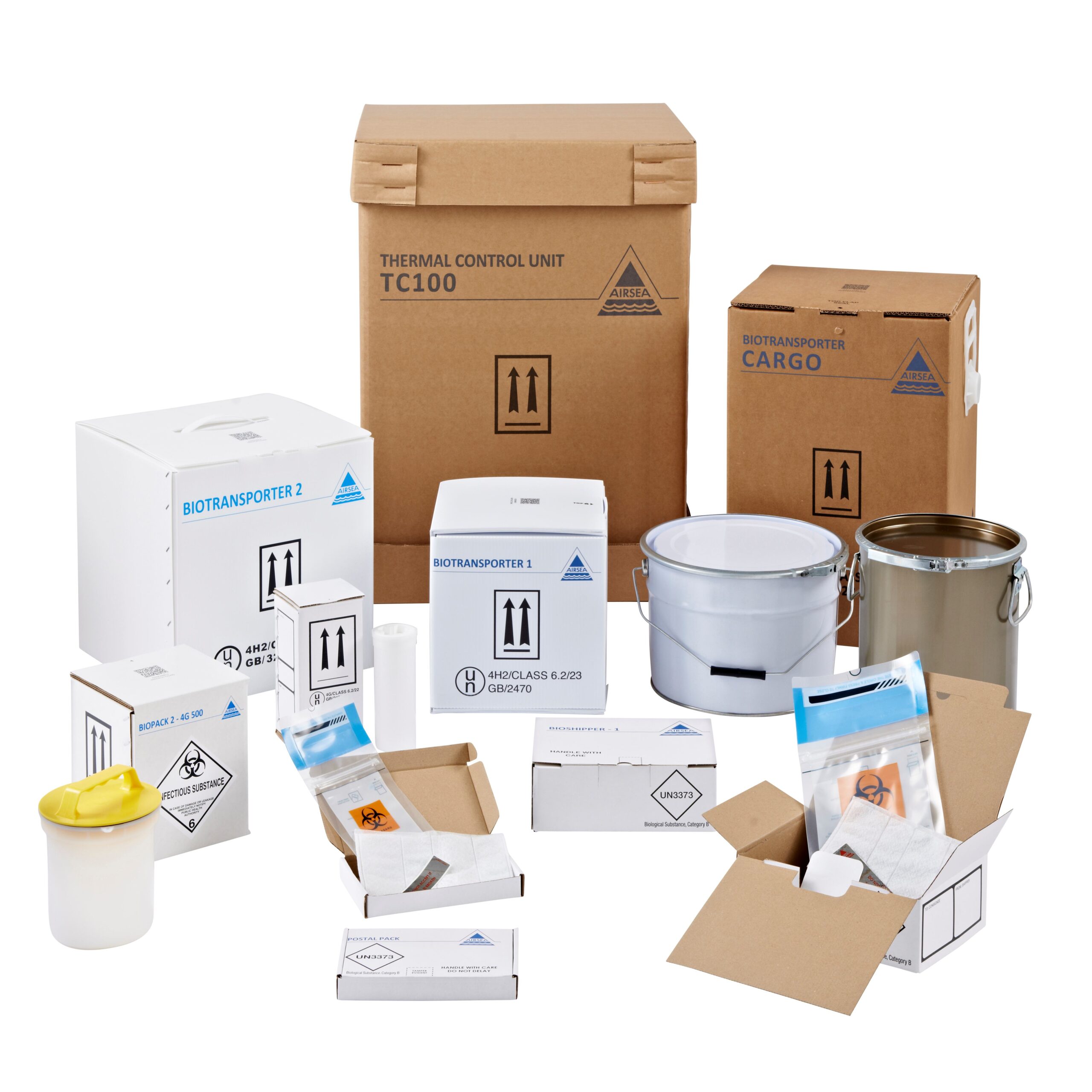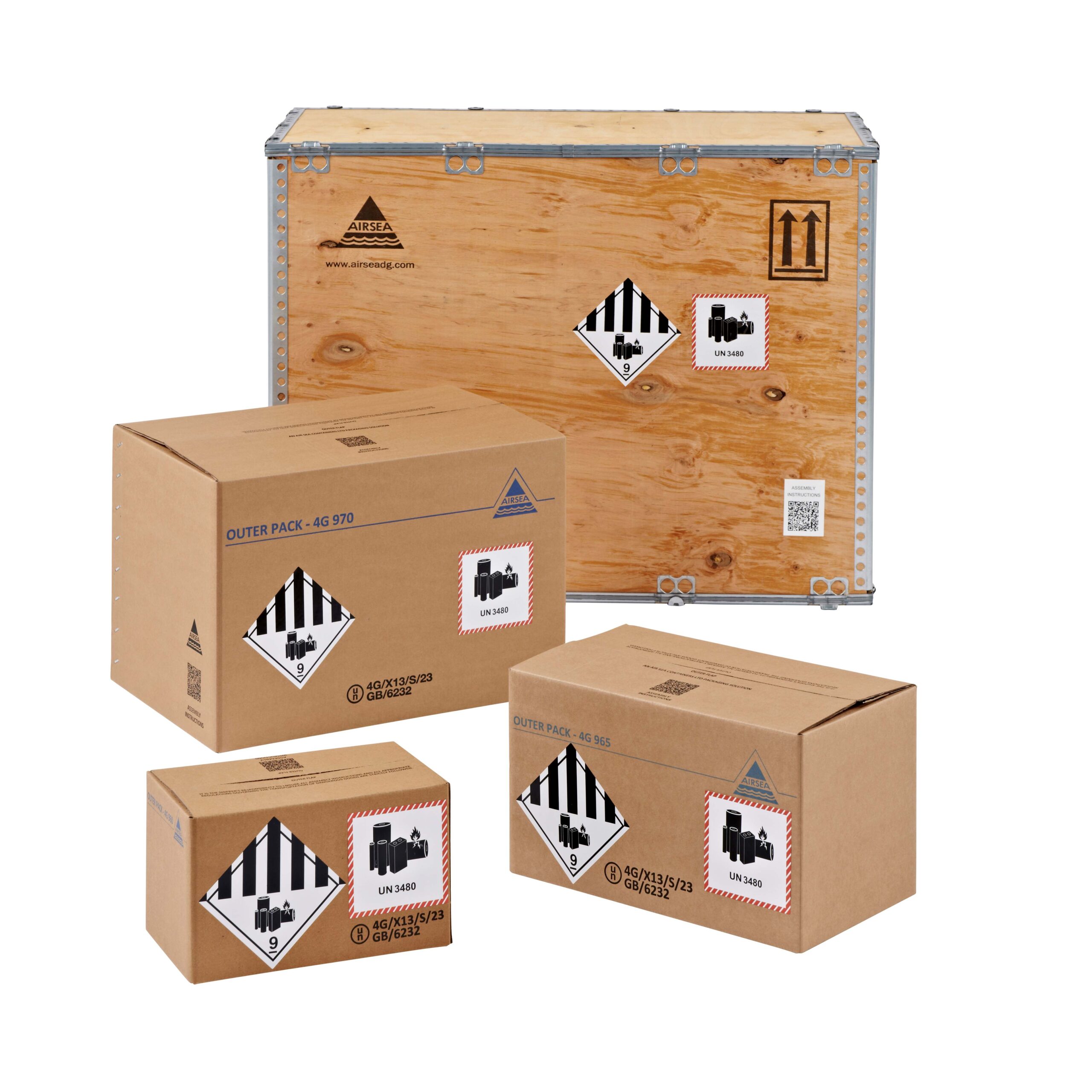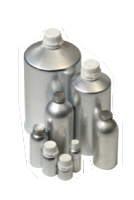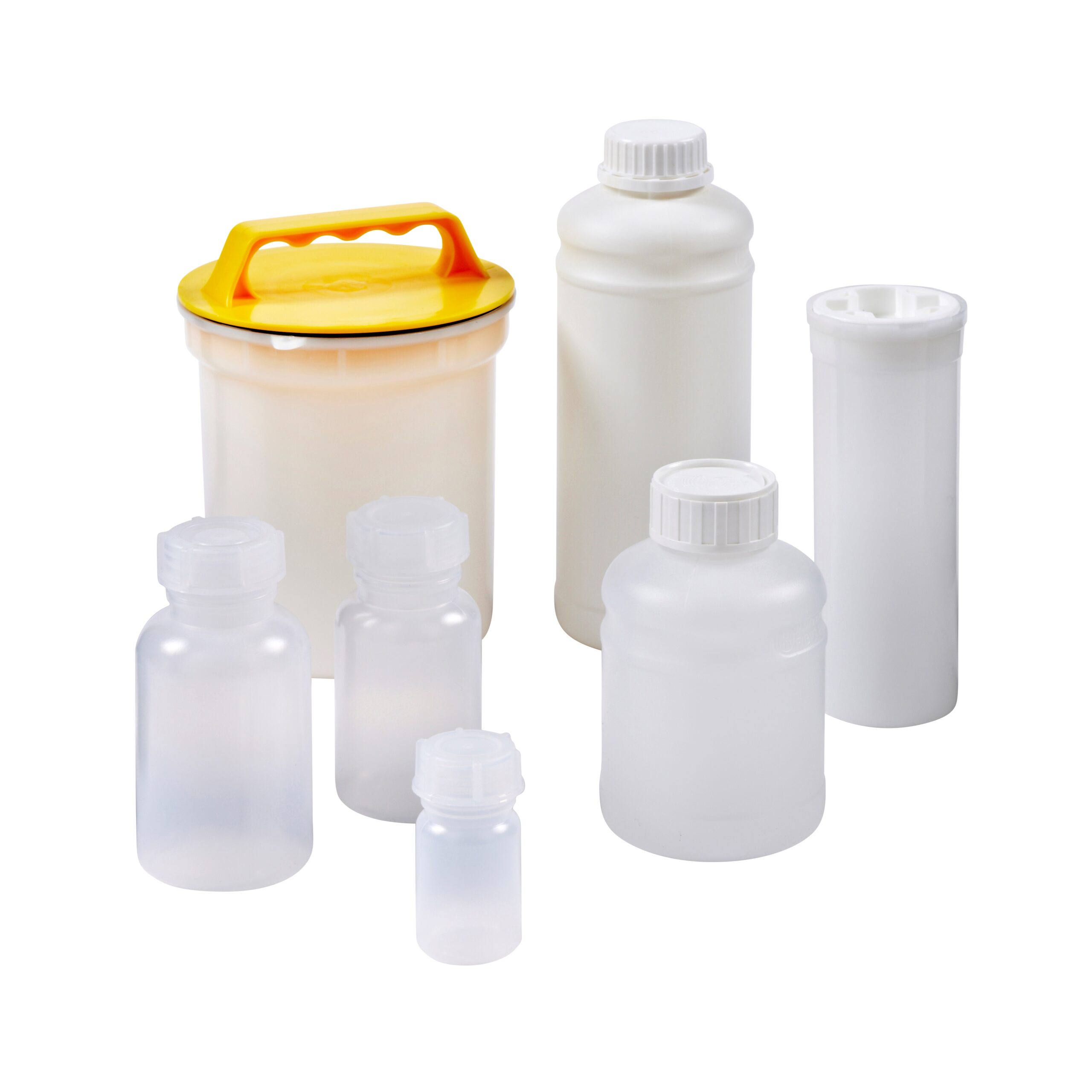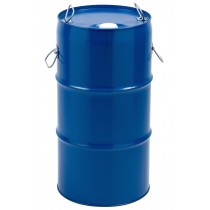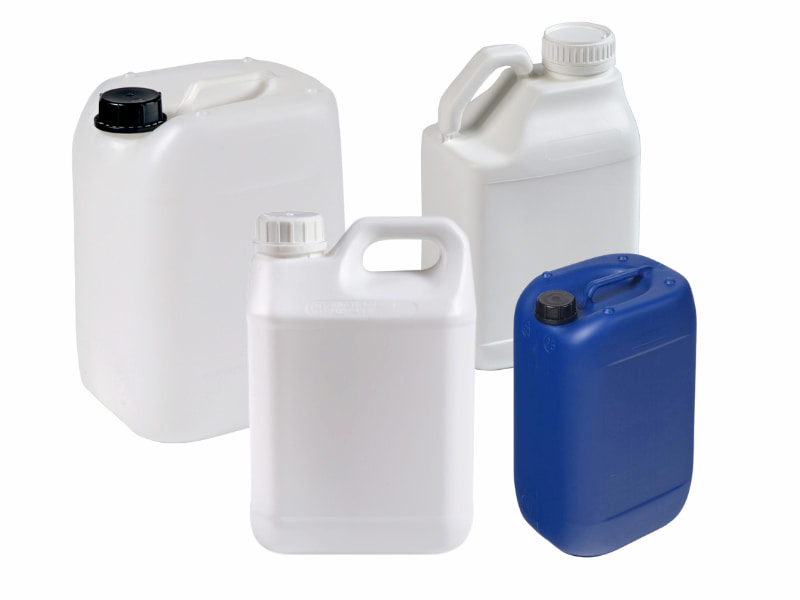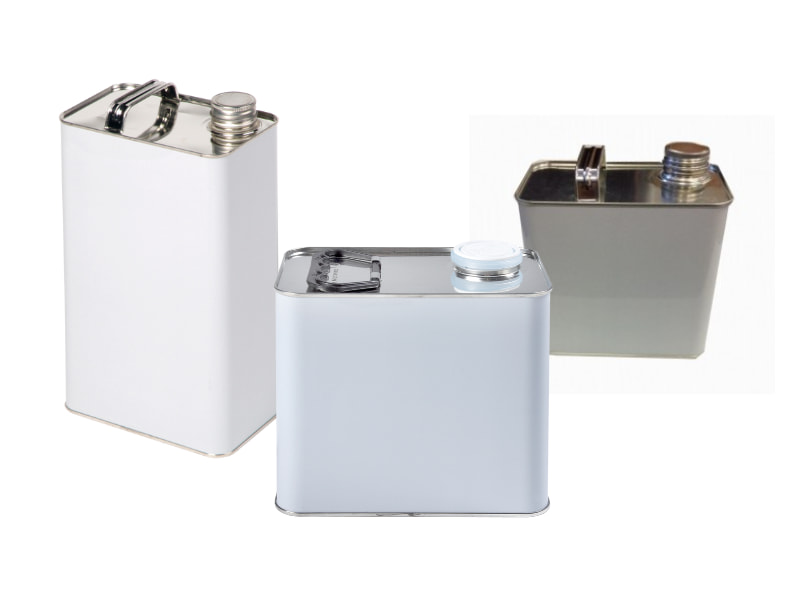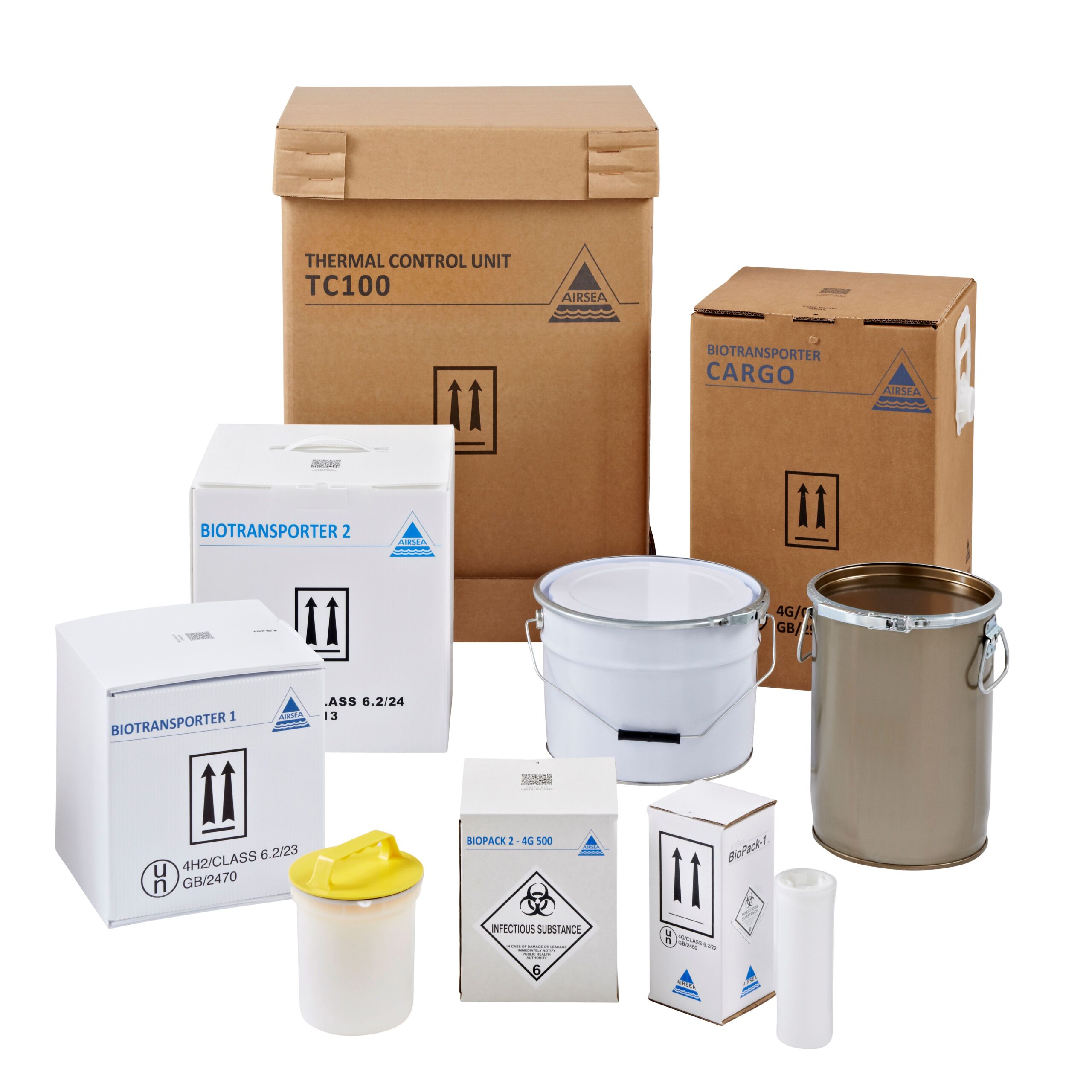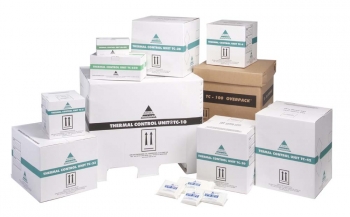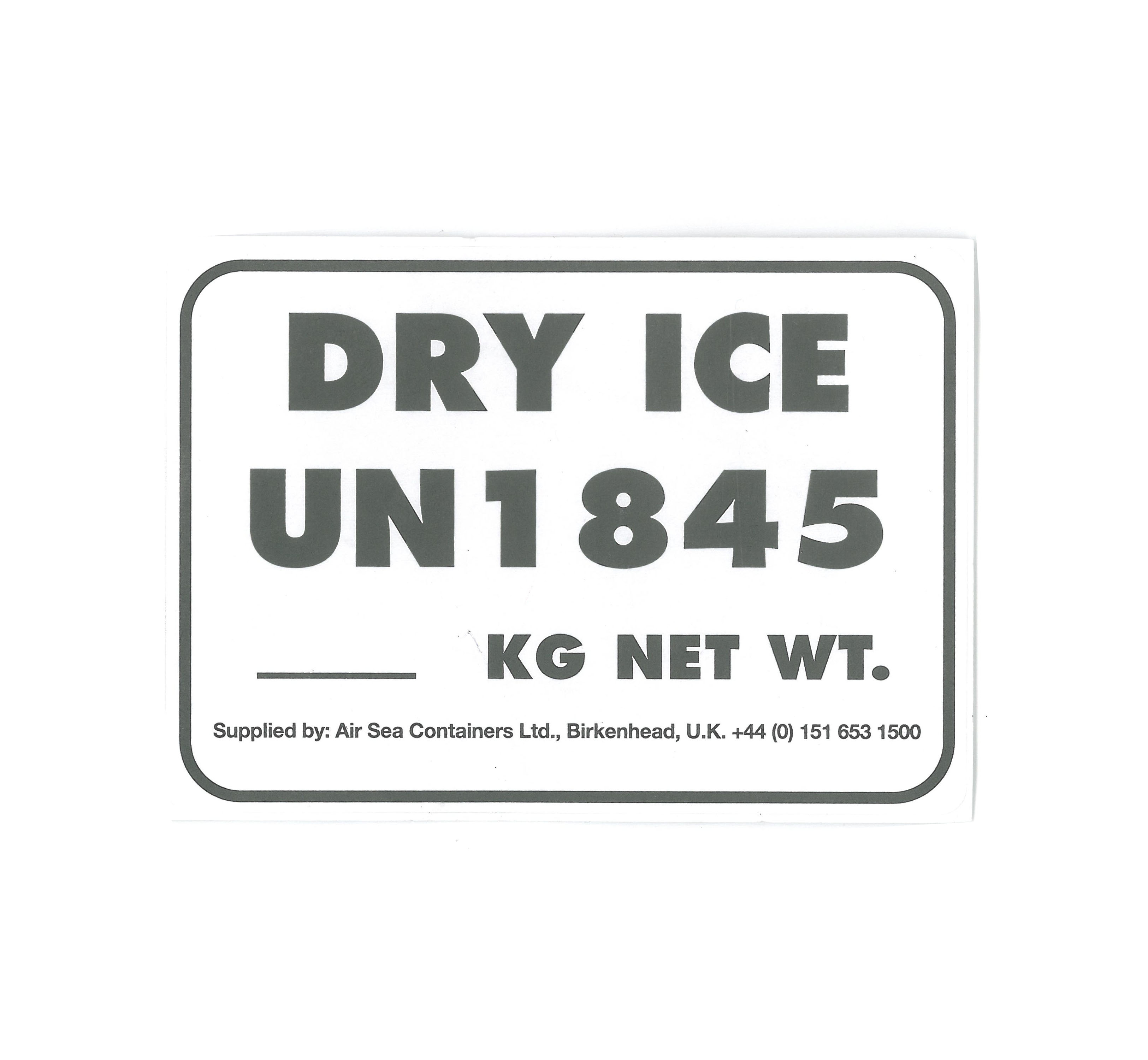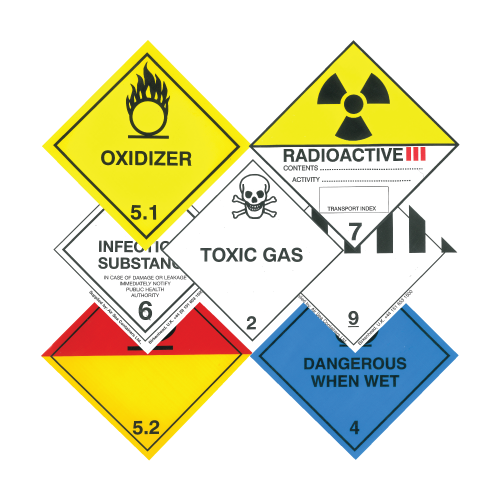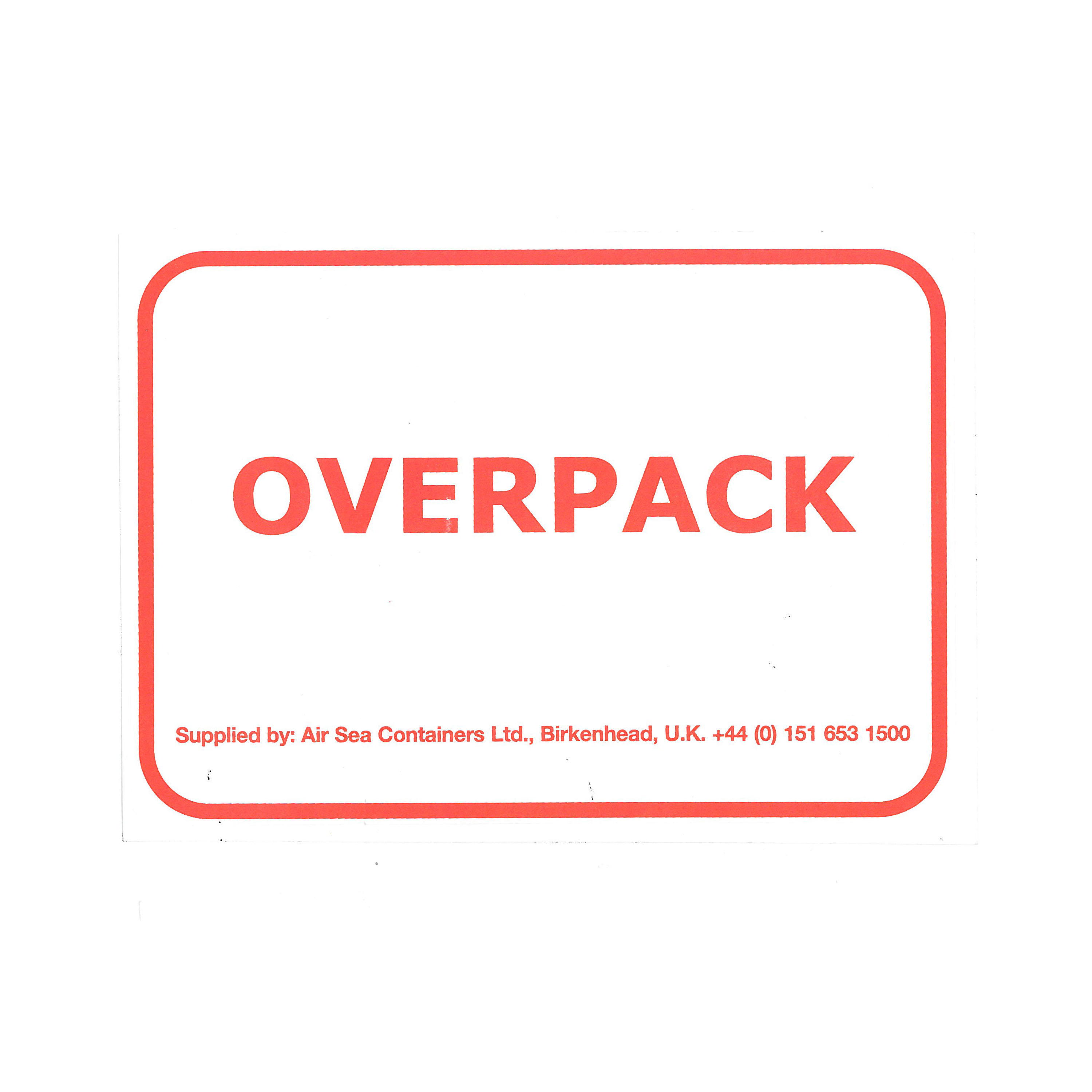When it comes to shipping hazardous materials, one of the most common questions we hear is: “Do I need 4G or 4GV packaging?” Both are UN-certified fibreboard boxes that provide reliable protection, but there are important differences. To help you choose the right solution, we’ve answered the most frequently asked questions below.
Q1: What’s the difference between 4G and 4GV packaging?
- 4G packaging is tested and certified with specific inner packaging (e.g. a certain type of glass bottle or HDPE plastic container). You must use the exact inners that were used during successful performance testing.
- 4GV packaging is more versatile. The “V” allows for various inners, meaning you can use different types of inner packaging (e.g. glass, plastic & steel inners such as bottles, jerricans, drums, etc.) as long as they are appropriate for the HazMat being shipped.
Q2: Which Packing Groups are 4G and 4GV approved for?
- 4G boxes can be certified for Packing Groups I (X), II (Y), or III (Z), depending on how they were tested. Always check the UN mark on the box.
- 4GV boxes are automatically tested and certified for Packing Group I (X)—the most stringent level. This also makes them valid for Packing Groups II and III, providing greater flexibility.
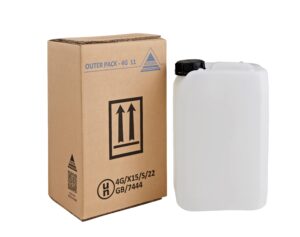
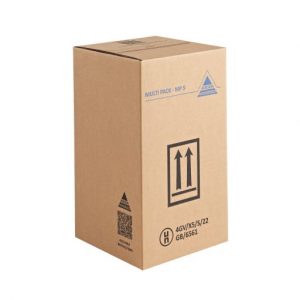
Q3: How do weight limits work?
- 4G packaging – The UN mark shows the maximum gross weight allowed (inners, contents, cushioning and the box combined).
- 4GV packaging – The weight rules are stricter. The maximum gross mass of inner packaging (including HazMat) cannot exceed half the weight of the inners used during drop testing. The rest of the weight allowance is for cushioning, accessories, and the outer 4GV box.
Q4: Can both 4G and 4GV be used for liquids and solids?
- 4G packaging must be specifically tested and certified for solids, liquids, or both.
- 4GV packaging is approved for both solids and liquids.
Q5: What drop tests are required?
- 4G boxes – Drop test heights vary by Packing Group:
- PG I (X): 1.8 m (5.9 ft)
- PG II (Y): 1.2 m (3.9 ft)
- PG III (Z): 0.8 m (2.6 ft)
- 4GV boxes – All are tested to PG I (1.8 m / 5.9 ft drop test).
Q6: Why choose 4GV over 4G (or vice versa)?
- Choose 4G if your hazardous material requires very specific inner packaging and you want to maximize weight allowance.
- Choose 4GV if you need flexibility with inners or want packaging that’s certified to the highest Packing Group.
Q7: Can I use these boxes for Class 1 (Explosives) or Class 7 (Radioactive) materials?
There are strict restrictions for Class 1 and Class 7 hazardous materials. If you need to ship these, please contact us directly for guidance on compliant packaging options.
Q8: How do I read a UN mark?
- Example 4G mark: 4G/Y7/S/25/USA/0001
- Example 4GV mark: 4GV/X7/S/25/USA/0002
These markings identify packaging type, PG, gross weight limit, year of manufacture, country of approval and approval ID.
You can read more here about understanding UN marks
So, which one is right for you?
Both UN 4G and UN 4GV fibreboard boxes provide robust, compliant protection for hazardous materials.
The right choice depends on your HazMat product, the inner packaging used, and your weight requirements.
Read our ‘differences between 4G and 4GV packaging’ article for more in depth information
Need assistance?
Our team specializes in UN-certified hazardous materials packaging and can help you find the most cost-effective and compliant option. Contact us today to discuss your needs.
 US
US


